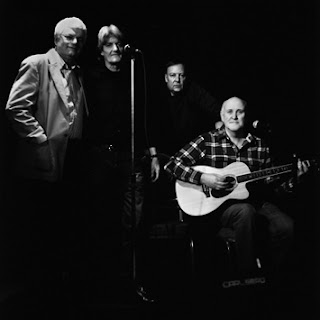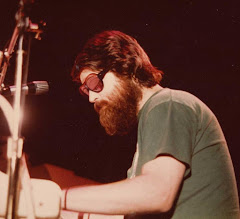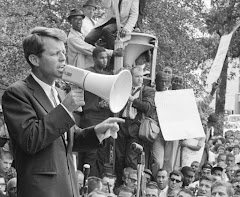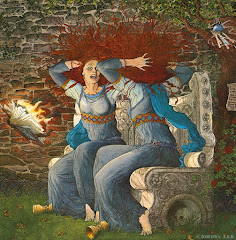Implacable in Texas
11 July 2013
Geoffrey O’Brien
The Searchers: The Making of an American Legend
by Glenn Frankel
Bloomsbury, 405 pp., $28.00
On a May morning in 1836, at a stockade called Parker’s Fort near the Navasota River in Texas, some ninety miles south of present-day Dallas, a nine-year-old girl was taken captive by a Comanche raiding party. At the beginning of March 1955, a famous director at a crisis point in his career began shooting a movie distantly derived from that earlier event. From these separate stories—the abduction of Cynthia Ann Parker and its long aftermath, and the making of John Ford’s The Searchers, and its own cultural aftermath as a belatedly acknowledged masterpiece—the veteran journalist Glenn Frankel has constructed a powerfully suggestive book.
In effect it is two books, of roughly equal length. In juxtaposing them Frankel measures the abyss between. Tracing the process by which raw experience is turned into history, and history into found material for art to chop up and rearrange for its own purposes, the book measures the gulf separating what happens from what is finally put in its place as memorial. The more connections Frankel establishes between events that occurred in nineteenth-century Texas and the uses that Ford’s film makes of them, the more layers of uncertainty and disconnection he exposes.
It is all about information being passed along and shared, but by whom, with whom, and toward what end? In laying out the elements of these stories—paying particular and sensitive attention to the personalities, so far as they can be surmised, of the individuals caught up in them—Frankel asserts no resolution beyond a nagging sense of the “relentless ambiguity” embodied by Ford’s movie. An unhealed historical wound finds expression in a film whose extraordinary beauty cannot assuage the contradictory and painful emotions that resonate at its core.
The Searchers is not a work of history but of legend, yet it is not a legend that puts history to rest. Suffused by inherited themes of incursion, massacre, captivity, racial antipathy, protracted cycles of revenge—marked in its opening episodes by a dread no subsequent plot developments can efface—it cannot relegate the past to the past. In its last scene a restored captive enters the dark interior of the home where we want to imagine she will find the warmth of family, while her rescuer, a figure doomed to isolation, walks off into the desert. Restoration is represented by an image of irrevocable separation.

Cynthia Ann Parker too became a restored captive, having surrendered, after twenty-four years with the Comanches, to a force of US troops and Texas Rangers in 1860, at what has been variously called the Battle of Pease River and the Pease River Massacre.
1 She was then thirty-three years old. There was no warmth in the restoration, and it is difficult to envision a movie of her fate. When Alan LeMay wrote the novel (1954) from which Frank S. Nugent’s screenplay is adapted, he drew on the Parker story as on other captivity narratives, and interviewed a Parker descendant; but had he attempted to hew to the outline of Cynthia Ann’s life, he could not have produced the shapely and satisfying narrative intended.
2 Her story was one that her own contemporaries found hard to grasp, if not altogether unacceptable. It is not really a story at all but many stories, to be patched together from partial, bewildered, sometimes outright mendacious accounts. Years go by unrecorded. Crucial scenes are missing. From Cynthia Ann herself there is nothing but silence; her recorded communications are very much secondhand.
She belonged to an extended family that settled in Texas in the early 1830s at what was then the western limit of the frontier. Ostensibly ruled by the king of Spain until 1821, this land would pass in the next forty-three years through the successive jurisdictions of Mexico, the Republic of Texas, the United States, and the Confederacy. None of these governments was able to assert control over the inland empire known as Comanchería, a region extending from Kansas to the Rio Grande and centered in the high plains of west Texas, its borders vigilantly guarded by the tribe that had enjoyed dominance there since the early eighteenth century.

The Comanches were a federation of nomadic bands whose mastery of mounted warfare made them, in Frankel’s words, “the most relentless and feared war machine in the Southwest.” Their raids were dreaded, for reasons that become clear from the testimony of survivors. “The logic of Comanche raids,” S.C. Gwynne writes in his recent history Empire of the Summer Moon, was straightforward: All the men were killed, and any men who were captured alive were tortured to death as a matter of course, some more slowly than others; the captive women were gang-raped. Some were killed, some tortured. But a portion of them, particularly if they were young, would be spared…. Babies were invariably killed, while preadolescents were often adopted by Comanches or other tribes
.3
They dispossessed the Apaches, Utes, and other tribes, kept the Spanish colonies of New Mexico and Texas under intermittent siege, and made destructive forays into northern Mexico. Frankel quotes an estimate of some two thousand captives held by Comanches in the early nineteenth century, when the Comanche population itself numbered between twenty and thirty thousand.
4 These captives might be kept as slaves, sold as hostages, or adopted into the tribe, sometimes as a substitute for a lost Comanche child.
Adopted captives might receive the same loving affection that one captive, the British immigrant Sarah Ann Horn, was startled to observe among the tribesmen who had clubbed her husband to death in her presence:
The strength of their attachment to each other, and the demonstration they give of the same, even to the dividing of the last morsel with each other upon the point of starvation, might put many professed Christians to the blush! But they are just the reverse of all this to all the world outside.
Cynthia Ann’s uncle James Parker—a teetotaling Baptist with a doubtful reputation as a land speculator and horse trader—led the clan to Texas. Frankel describes him as a self-proclaimed Man Who Knows Indians: the man steeped in wilderness ways, a necessary intermediary between frontier and civilization. Yet Parker had placed his family in a location of maximum jeopardy, and on the morning the Comanches rode up to the stockade, in a party of at least a hundred, neither he nor anyone else had taken proper precautions. Most of the men were working in the fields well beyond the limits of the fort; Cynthia Ann’s father Silas was on hand but without any ammunition in his pouch; and the gate was open. Within half an hour Cynthia Ann’s grandfather, father, one of her uncles, and two other men had been killed and her grandmother left for dead. Cynthia Ann and her eight-year-old brother John were taken captive along with James Parker’s married daughter Rachel Plummer, her newborn son, and another female relative. All were soon parceled out to different bands.
James Parker, who survived the attack along with twenty-three others, published a narrative describing the fugitives’ arduous flight to safety:
We were in the howling wilderness, barefooted and bareheaded, a savage and relentless foe on the one hand; on the other, a traceless and uninhabited country literally covered with venomous reptiles and ravenous beasts.
Rebuffed in his request for military help in getting back Rachel and the other captives, James returned alone to Comanche country in repeated failed rescue attempts. In 1837 Rachel was ransomed and restored to her family. In failing condition, she wrote a plain and harrowing memoir of her captivity—her son had been taken from her, her baby born in captivity killed in front of her, and she had survived as a frequently abused slave—and died soon thereafter, in March 1839.
The widely read accounts of James Parker and Rachel Plummer kept Parker’s Fort alive in memory; and in 1842 both Rachel’s son James, now seven, and Cynthia Ann’s brother John, thirteen, were separately ransomed. They spoke only Comanche. A state of war now existed between the Republic of Texas and the Comanches. Texas president Mirabeau Lamar called for the “total extinction or total expulsion” not just of Comanches but of all Indians in Texas. When a group of Comanche chiefs came to San Antonio in 1840 to negotiate the return of captives, the parley flared into a massacre when the Texans, outraged by the condition of one of the captives, proceeded to slaughter the chiefs and many of the women and children accompanying them. This was followed by large-scale Comanche raids culminating in the burning of the port town of Linnville, avenged in turn by a Texan attack in the heart of Comanchería.

The figure of the lost Cynthia Ann lingered as an incitement to vengeance. With time the idea of rescue became fainter and less meaningful. Narratives like those of Rachel Plummer and Sarah Ann Horn left little hope that, even if found, she could be restored to what she was. The unspoken taint of sexual violation attached itself to restored captives and they could, in Frankel’s words, “find themselves shunned by husbands, friends, and relatives.” Over the years there were contradictory reports of sightings of Cynthia. She was married, it was said, against her will or otherwise; she had borne children to whom she was devoted. Her brother John had supposedly visited her and been told she did not wish to go home. John subsequently vanishes from the record; he was himself rumored to have gone back among the Comanches, unable to readjust.
At Pease River, as soldiers shot down old men, women, and children, a woman in a buffalo robe, holding her infant daughter, called out “Americano!” It took a while for her to be identified as Cynthia Ann Parker. She now spoke only Comanche and at first said (through an interpreter) that she had forgotten her original name. An observer wrote: “She was sullen…a hard looker…as dirty as she could be and looked to me more like an Indian than a white woman.” Her rescue was hardly an occasion for public celebration. Apparently it resembled more a second captivity. Withdrawn, terrified, grief-stricken at the loss of her husband and of her two sons, she was passed from relative to relative, no one knowing what to do with her.
Truncated glimpses found their way into the record. She tore off the clothes she had been dressed in and tried to run away. At her uncle’s house in Fort Worth, she crawled under the bed to avoid the stares of strangers. She was bound with a rope and put on public display for curiosity-seekers: “Tears were streaming down her face, and she was muttering in the Indian language.” She made a fire in the backyard and practiced a Comanche mourning ritual. In a rare encounter with a Comanche speaker, a retired Indian scout, she pleaded with him all night to take her back to Comanchería: “My heart is crying all the time for my two sons.” Around 1865 she died unmemorialized, devastated by the recent death of the daughter she had with her when she was rescued. Her uncle Isaac Parker called her “the most unhappy person I ever saw…. She was as much an Indian as if she had been born one. She knew no other people except as enemies.”
Are these latter episodes scenes that John Ford could have filmed? He knew how to paint deep sorrow and wordless estrangement, disappointment with life and the gaze fixed on what is no longer there. Such moments are found throughout his work, forming almost a secret undercurrent binding them together. But to have entered the consciousness of Cynthia Ann Parker, a captive restored into a second captivity, unable to manage a second transformation of identity: that would have to have been part of another history. The Searchers is a film with a profound understanding of its own limits; even as it pushes against them, it acknowledges further depths it cannot really represent.

One of the lost sons Cynthia Ann longed for was Quanah Parker, a chief of the Comanches both before and after their surrender to overpowering military force in 1874. He negotiated for the Comanches, built a house at Fort Sill, Oklahoma, and entertained visitors such as Theodore Roosevelt. In 1910 he had his mother’s bones retrieved from what a witness called “the most desolate and forsaken cemetery I have ever seen” and reinterred with a monument in Cache, Oklahoma, where he would be buried next to her the following year. To his son-in-law, who had brought back the remains, he said: “I look for her long time. Now I’m done.”
2.

The story that Alan LeMay wrote, that Frank S. Nugent adapted, and that John Ford in his usual fashion pared down, is simple although abounding in incident. In Texas, 1868, Ethan Edwards (John Wayne) returns to his brother Aaron’s homestead, where he lives with his wife Martha, his young son, his daughters Lucy and Debbie, and Martin Pawley (Jeffrey Hunter), an adopted son whose parents were killed by Indians. Rapidly we are given to understand that Ethan’s recent past is mysterious and dubious; gestures and exchanged glances also establish that Ethan and Martha love each other.

The next day Ethan and Martin ride with a posse to investigate the theft of cattle from a neighboring family, the Jorgensens. Too late they recognize the theft as a diversionary ruse by Comanches. Aaron, Martha, and their son are killed in a massacre we do not witness; the girls have evidently been taken captive. Ethan and Martin, at first accompanied and then on their own, set off in pursuit; Lucy is found raped and murdered, but they continue hunting for Debbie (played as an adult by Natalie Wood). Seasons turn into years; the search advances through snowy landscapes and stretches of desert.

Martin becomes aware that Ethan, appalled at the idea of Debbie becoming a Comanche, may not want to rescue her but to kill her. When she is at last found it appears that he will do just that, but instead he lifts her into his arms and takes her to the Jorgensens, whose ranch has now become a surrogate home replacing the one destroyed in the beginning. Debbie and the others enter the house; Ethan, the eternal outsider, goes on his way.

This broad outline hardly conveys the experience of watching a movie of such measured and detailed expressiveness. Virtually every shot in The Searchers has the density of a composition whose implications have been nurtured over a lifetime; Ford’s collaboration with cinematographer Winton C. Hoch yields images that seem fundamental and inescapable, virtually abstract, yet teeming with the human life that inhabits them. Each scene establishes a distinct geography; we move through many worlds in a film that feels hauntingly extended although only two hours long.

Ford creates epic feeling through compression. What for some filmmakers would be a scene with him might be a fragment of dialogue or a glance, like the glances that convey all we are told about the emotional bond between Ethan and Martha. Frank Nugent, whose superb script was made even better by Ford’s cuts, wrote that “Ford never has formally surrendered to the talkies” and “detests exposition.” Remarkably, the film was shot out of sequence, with different moments of crucial scenes (like Debbie’s rescue) shot in separate locations. “He never shot in continuity,” according to his frequent collaborator William H. Clothier, “it didn’t mean a damn thing to him…. He could shoot a close-up here and put it in a scene that was shot three weeks later.”
The uncanniness of The Searchers—I don’t know another word for it—is the impression it creates of emanating in one piece from a single perception. There is an aesthetic unity, expressed through color and geometry, the movements of actors and animals, the texture of landscape and language. (The landscape is mostly Monument Valley, substituting for the altogether different Texas Plains setting of the story; the language incorporates a mixture of near-biblical archaisms and folksy turns of phrase, often drawn directly from LeMay’s text.) That sense of unity vibrates against the roiled and contradictory currents of the material. The movie is all about violence and incompatibility, about families ripped apart and individuals torn down the middle, about traumas that cannot be forgotten and losses that cannot be made up. There is a ragged sense of pain at its heart.
Yet we are talking about a work of popular entertainment marketed with great success. Part of Ford’s genius lay in doing precisely what he wanted without declaring it, often hiding his subtlest implications under seeming obviousness. His is an art of concealment, appropriate to a man who managed to conceal himself within the domineering, sometimes cruelly bullying persona he perfected to protect his domain. (By Maureen O’Hara’s testimony, Ford “built walls of secrecy, lies, and aggression.”) He made The Searchers at a bad moment; he had withdrawn in mid-production from Mister Roberts after punching Henry Fonda and then, contrary to his usual practice, beginning to drink heavily on the set. (Ford’s alcoholism was deep but controlled; he made the movies sober, then collapsed into binges.) He was sixty and had serious health problems; his eyes were getting bad.

The Searchers feels like a challenge undertaken. In the early 1950s Ford made a string of beautiful, entirely personal films—Wagon Master, The Quiet Man, The Sun Shines Bright—in which private allegorical worlds were disguised as the Old West or Ireland or the Old South. The Searchers lets in a ferocity previously kept at bay—lets it in primarily through its star. John Wayne’s Ethan Edwards becomes a medium for expressing a race-hatred and lust for vengeance all the more disturbing for being only a part of a complex and, despite all, sympathetic personality—he is, after all, the hero.
Of the Cynthia Ann Parker story and the world in which it unfolded, The Searchers keeps only fragments, yet it channels a live current of emotion directly from some unhealed hurt, some old well of fear. Right at the start we are made to experience the fear of massacre, of being set upon in the middle of nowhere and violated, tortured, wiped out. I don’t know if anyone has comparedThe Searchers to Psycho, but the destruction of the Edwards family just after we make their acquaintance—a destruction all the more terrifying because we are not allowed to see it, just as Ethan knocks down Martin to prevent him from seeing his aunt’s body—surpasses Janet Leigh’s shower scene in intensity. There, a person kills a person; here, a group annihilates another group. Psycho makes us worry about getting killed; The Searchers makes us worry about people we love getting killed while we can do nothing about it.

The shot of John Wayne leaning on his saddle as Ethan grasps that he will be unable to reach his brother’s home in time is like a photograph of the moment when suffering turns into vengeful bitterness. It is the face of a sorrow that can justify unlimited hatred. Frankel, writing about James Parker’s narrative of his travails, notes the persistent self-pity that informs it, while acknowledging that his sufferings were doubtless real enough: “I pursued my journey with little hope of being alive at night, or ever again beholding the face of a human being.” Ethan clearly derives from James, a man with a dubious past and capable of murder, a stark early wilderness figure right down to his occasional biblical utterance: “We’ll find them just as sure as the turning of the earth.” Everyone else in the film seems modern and forward-looking alongside this ancient wanderer who cannot forget or forgive—everyone, that is, except for his opposite number, the Comanche chief Scar, Debbie’s abductor and consort, whom Ethan will finally scalp.
The Searchers is not a liberal western in the mode of Broken Arrow (1950) orApache (1954). Ford’s son Pat wrote in a preproduction note: “We hope to portray the Comanches with as much barbarism and savagery as possible.” The film’s premise is pretty much that of the original Texas settlers: they saw it as their destiny to settle on the land and would remove any obstacles to that end. Mrs. Jorgensen’s eloquent speech (“Someday this country will be a fine good place to be. Maybe it needs our bones in the ground before that time can come”) could just as easily have come from the pen of James Parker, who wrote:
If this region was not infested by hostile Indians, it would be very soon settled, and when once settled and cultivated by civilized man, it will approximate to an earthly paradise.
Rhetorical ornaments aside, the story is about one implacable force colliding with another. Cornelius Vanderbilt Whitney, the wealthy heir who largely financed the film, lobbied Ford to make it explicitly patriotic and suggested changing the title toThe Searchers for Freedom. In fact the American nation is represented here by the army, depicted variously as comically inept and needlessly brutal; we see the aftermath of one indiscriminate massacre of Indians, and the final cavalry assault on Scar’s camp looks uncomfortably like the Pease River Massacre. Otherwise we are dealing with small isolated groups struggling to assert a place in a merciless landscape.

The Comanche enemy as such is not the problem: Chief Scar is merely the alien other to be dealt with like any other opposing force. That is the stuff of clean heroic tales. Mere death and torture were common elements even for the most innocuous adventure movies. But the poison that seeps into The Searchers is the mixing of bloodlines. Ethan’s rage is focused on sexual violation by which a woman is irrevocably alienated. Aunt Martha and Lucy are killed after being raped, and Ethan assumes that this is preferable to Debbie’s living on after being married to a Comanche.
Frankel ranges through the nineteenth-century record to exhibit the constantly recurring theme of the Fate Worse Than Death. Yet strangely enough in a 1956 movie it had a shocking effect. We were on the edge of being shown some ultimate image of degradation and cruelty, and there was only John Wayne to spare us by blocking the view, as when Ethan refuses to say more about Lucy’s fate: “What have I got to do, draw you a picture? Spell it out? Don’t ever ask me! Long as you live don’t ever ask me more!”

Those blacked-out images, the scenes we are not permitted to see, have, as their counterpart, the images we do see of the violence their memory provokes: Ethan shooting out the eyes of a dead Comanche because “by what that Comanch believes, ain’t got no eyes he can’t enter the spirit land, has to wander forever between the winds,” or slaughtering a buffalo herd to help starve Indians, or simply plunging his knife repeatedly with main force into the sand: perhaps the most subtly troubling of all, pure violent energy lacking only a target.

But Ethan is the hero; and so when the moment arrives when according to all that has come before he must shoot Debbie down, he relents and lifts her up: “Come on, Debbie, we’re going home.” Here we enter definitively the country of legend. The unlikeliness of Ethan breaking out of the circle of vengefulness is written on John Wayne’s face again and again, most vividly in the scene—Frankel singles it out as “the richest and most troubling”—in which he looks in horror and disgust at the deranged white women recovered from a Comanche camp.
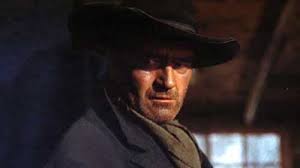
That Ethan should be liberated in an instant from history is a miracle. It is the resolved chord that the film needs and that history lacks. Ford does not wish to deny history or offer the kind of specious happy ending that movies of the era were generally glad to provide; so while he lets us rest in the possibility that the restored Debbie will find in the bosom of her new family the serenity that Cynthia Ann Parker never knew, he severs John Wayne from the reunion and sends him out into the howling wilderness. We may, as in the hymn sung twice in the film, gather at the river; but there are chasms that cannot be bridged.
1 A participant told a historian, many years after the fact: “That was not a battle at all, but just a killing of squaws. One or two bucks and sixteen squaws were killed. The Indians were getting ready to leave when we came upon them.”
2 LeMay’s only acknowledgment that The Searchers was connected to the Cynthia Parker story came in a letter where he stated that the book represented “about all I have to contribute on this particular subject.”
3 S.C. Gwynne, Empire of the Summer Moon: Quanah Parker and the Rise and Fall of the Comanches, the Most Powerful Indian Tribe in American History (Simon and Schuster, 2010), p. 19.
4 Pekka Hämäläinen, The Comanche Empire (Yale University Press, 2008), p. 179.
http://www.nybooks.com/articles/archives/2013/jul/11/searchers-implacable-texas/?pagination=false











